| Raja Harischandra | |
|---|---|
 Publicity poster for film show at the Coronation Cinema, Girgaon, Mumbai | |
| Directed by | Dadasaheb Phalke |
| Produced by | Dadasaheb Phalke |
| Screenplay by | Dadasaheb Phalke |
| Starring |
|
| Cinematography | Trymbak B. Telang |
| Edited by | Dadasaheb Phalke |
Production company |
Phalke's Films |
Release date |
|
Running time | 40 minutes |
| Country | India |
| Language | Silent |
Raja Harishchandra (lit.?King Harishchandra) is a 1913 Indian silent film, directed and produced by Dadasaheb Phalke. It is often considered the first full-length Indian feature film. Raja Harishchandra features Dattatraya Damodar Dabke, Anna Salunke, Bhalchandra Phalke, and Gajanan Vasudev Sane and is based on the legend of Harishchandra, recounted in the Ramayana and Mahabharata. The film, being silent, had English and Hindi language intertitles.
Phalke decided to make a feature film after watching The Life of Christ (1906) at a theatre in Mumbai, formerly known as Bombay. He went to London for two weeks to learn filmmaking techniques and founded Phalke Films. He imported the hardware required for the filmmaking and exhibition from England, France, Germany, and the United States. Phalke shot a short film Ankurachi Wadh (Growth of a Pea Plant) to attract investors for his venture. He published advertisements in various newspapers calling for the cast and crew. As no women were available to play female leads, male actors performed the female roles. Phalke was in charge of scriptment, direction, production design, make-up, editing, along with film processing. Trymbak B. Telang handled the camera. Phalke completed filming in six months and 27 days producing a film of 3,700 feet, about four reels.
The film premiered at the Olympia Theatre, Mumbai on 21 April 1913, and had its theatrical release on Saturday, 3 May 1913 at the Coronation Cinema, Girgaon, Mumbai. It was a commercial success and laid the foundation for the film industry in the country. The film is partially lost; only the first and last reels of the film are preserved at the National Film Archive of India. Some film historians believe they belong to a 1917 remake of the film by Phalke titled Satyavadi Raja Harishchandra.
The status of Raja Harischandra as the first full-length Indian feature film has been debated. Some film historians consider Dadasaheb Torne's silent film Shree Pundalik, released on 18 May 1912, the maiden Indian film. The Government of India recognises Raja Harischandra as the first Indian feature film.
Contents
Plot
King Harishchandra (D. D. Dabke) is shown teaching his son, Rohitashva (Bhalchandra Phalke), how to shoot with a bow and arrow in the presence of Queen Taramati (Anna Salunke). His citizens ask the King to go on a hunting expedition. While on the hunt, he hears the cries of some women. He reaches a place where the sage Vishwamitra (Gajanan Sane) is performing the yajna to get help from Trigunashakti (three powers) against their will. The King unwittingly interrupts Vishvamitra in the midst of his yajna by releasing three powers. To appease his wrath, Harishchandra offers his kingdom. The King visits the royal palace and informs the Queen Taramati of the happenings. Vishwamitra sends Harishchandra, Taramati, and Rohitashva to arrange for the Dakshina. While in exile, Rohitashva dies. Harishchandra sends Taramati to ask the Domb King for a free cremation. On her way to meet the king, Vishwamitra frames Taramati for the murder of the prince of Kashi. Taramati faces trial, pleads guilty and is ordered to be beheaded by Harishchandra. When he raises his sword to complete his task, a pleased Lord Shiva appears. Vishwamitra reveals that he was examining Harishchandra's integrity, returns the crown to the King and rejuvenates Rohitashva.
Cast
- Dattatraya Damodar Dabke as Harishchandra
- Anna Salunke as Taramati, Harishchandra's wife
- Bhalchandra Phalke as Rohitashva, son of Harishchandra and Taramati
- Gajanan Vasudev Sane as Vishvamitra
Other artists in the film were:
- Dattatreya Kshirsagar
- Dattatreya Telang
- Ganpat G. Shinde
- Vishnu Hari Aundhkar
- Nath T. Telang
Production
Development
– Phalke on watching Jesus on the screen
On 14 April 1911, Phalke with his elder son Bhalchandra went to see a film, Amazing Animals, at the America India Picture Palace, Girgaon, Mumbai. Surprised at seeing animals on the screen, Bhalchandra informed his mother, Saraswatibai, about his experience earlier that day. None of the family members believed them, so Phalke took his family to see the film the next day. As it was Easter, the theatre screened a film about Jesus, The Life of Christ (1906) by the French director Alice Guy-Blaché instead. While watching Jesus on the screen, Phalke envisioned Hindu deities Rama and Krishna instead and decided to start in the business of "moving pictures". After completing his two-week trip to London to learn filmmaking techniques, he founded "Phalke Films" on 1 April 1912.
During his London trip, Phalke had placed an order for a Williamson camera and Kodak raw films and a perforator which reached Mumbai in May 1912. He set up a processing room and taught his family to perforate and develop the film. Though Phalke was certain of his idea of filmmaking, he could not find any investors. So, he decided to make a short film to demonstrate the techniques. He planted some peas in a pot, placed a camera in front of it, and shot one frame a day for over a month. This resulted in a film, lasting just over a minute, of the seed growing, sprouting, and changing into a climber. Harishchandra titled this short film Ankurachi Wadh (Growth of a Pea Plant) and showed it to selective individuals. Some of them, including Yashwantrao Nadkarni and Narayanrao Devhare, offered Phalke a loan.
Story
In his Marathi language magazine Suvarnamala, Phalke had published a story Surabaichi Kahani (A Tale of Sura). The story, which depicted the ill effects of alcoholism, was the first he considered for filming. After watching several American films screened in Mumbai, he observed they included mystery and romance which the audiences liked. Family members suggested the storyline should appeal to middle class people and women and should also highlight Indian culture. After considering various stories depicted in Hindu mythology, Phalke's family shortlisted legends of Krishna, Savitri and Satyavan, and Harishchandra. At the time, a play based on the legends of Harishchandra was popular on Marathi and Urdu stages. Friends and neighbours had often called Phalke "Harishchandra" for having sold all his belongings, except his wife's Mangala sutra, to fulfil his filmmaking dream. So, Phalke decided on the legends of Harishchandra and wrote the script for his feature film.
Casting
– Casting call published in various newspapers
Phalke published advertisements in various newspapers like Induprakash calling for the cast and crew required for the film. It was well-received and huge number of applicants came in for the auditions. Since he was making a silent film, Phalke allowed mute artists to audition. Despite a growing response to the advertisement, he was not satisfied with the performers' skills. He discontinued the advertisements and decided to scout for the artists through theatre companies.
Padurang Gadhadhar Sane and Gajanan Vasudev Sane were among the first artists to join Phalke Films. The former was playing female roles in a the Natyakala theatre company; the latter was performing in Urdu plays. Both joined for a salary of ? 40 per month. Gajanan Sane introduced his acquaintance Dattatraya Damodar Dabke. Phalke was impressed with his physique and personality and offered him the lead role of Harishchandra.
In response to the advertisement, four prostitutes auditioned for the role of Taramati. Phalke rejected them for not having satisfactory looks and revised the advertisement to read: "Only good-looking women should come for interview." Two more prostitutes auditioned but left after two days. A young lady with "passable appearance", who was a mistress, auditioned and Phalke selected her for the female lead. She rehearsed for four days. However, on the fifth day, her master objected to her working in the film and took her away. In despair, Phalke also visited Mumbai's red-light area on Grant Road in Kamathipura. He was asked either to pay a high salary or to marry the woman. One day, while having tea at a restaurant on Grant Road Phalke noticed Krishna Hari alias Anna Salunke, an effeminate young man with slender features and hands. Salunke was working as a cook or waiter at the restaurant on a monthly salary of ?10. He agreed to work in films when Phalke offered him a raise of five rupees.
Phalke auditioned many boys for the role of Rohitashva, son of Harishchandra and Taramati, but none of the parents would allow their children to work in the film as the character would have to live in the forests and was to die. Finally, Phalke's elder son Bhalchandra was assigned the role. He became the first child actor in Indian cinema.
Pre-production
Watch movie Raja Harishchandra online on Amazon
Watch movie Raja Harishchandra online
Watch The Movie On PrimeTahaan Full HD Movie Download
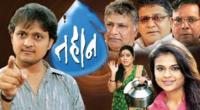
Veera Madakari Full HD Movie Download
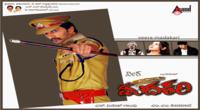
Daasi Full HD Movie Download
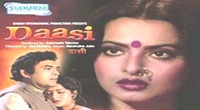
Abdullah Full HD Movie Download
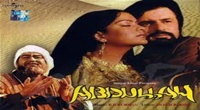
Meri Biwi Ka Jawab Nahin Full HD Movie Download
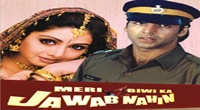
Enakkul Oruvan Full HD Movie Download
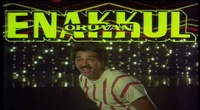
Dharam Yudh (1988) Full HD Movie Download
.jpg)
Bazaar (1982) Full HD Movie Download
.jpg)
Nishan Full HD Movie Download
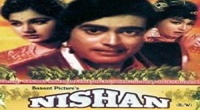
Vilayati Nu Full HD Movie Download
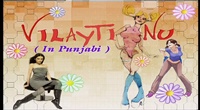
Veerabaahu Full HD Movie Download
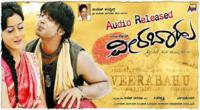
Mentor Full HD Movie Download

Pachani Samsaram Full HD Movie Download
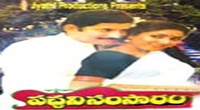
Family Full HD Movie Download

Crime Story Full HD Movie Download
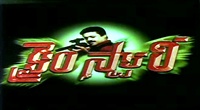
Mrugaya Full HD Movie Download
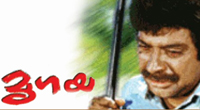
Edutha Sabatham Mudipen Full HD Movie Download
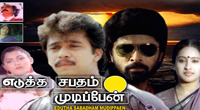
Anjaneyulu Full HD Movie Download
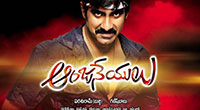
Bangaru Chilaka Full HD Movie Download
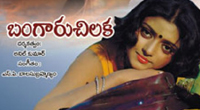
Aadavallu Aligithe Full HD Movie Download
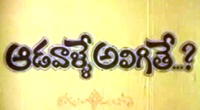
Palay Khan Full HD Movie Download
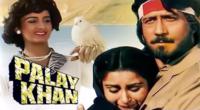
Download latest Movie from bollywood
- 1> baaghi 3
- 2> THE SKY IS PINK MOVIE FULL STORY AND REVIEW
- 3> Luka Chuppi
- 4> TO ALL THE BOYS I’VE LOVED BEFORE
- 5> Kabir Singh
- 6> Street Dancer 3D
- 7> Simmba
- 8> Gone Girl
- 9> The Girl Who Lived
- 10> Ludo
- 11> DILWALE DULHANIA LE JAYENGE
- 12> GUILTY
- 13> The Godfather
- 14> Adventures of Rusty
- 15> Sooryavanshi
- 16> Satyameva Jayate 2
- 17> Thappad
- 18> Bhool Bhulaiyaa 2
- 19> KGFChapter 2
- 20> Mardaani 2
- 21> Pinjar
- 22> Shivaji maharaj
- 23> Ek Villian 2
- 24> Hungama 2
- 25> Divergent
- 26> Mumbai Saga
- 27> The Internship
- 28> HIT (telugu)
- 29> Panga
- 30> The perfect date
- 31> 16 December
- 32> Gopala Gopala (Telugu)
- 33> Brahmastra
- 34> Gangubai Kathiawadi
- 35> Manmadhudu
- 36> Nenu local
- 37> Mahanati
- 38> Shatamanam bavathi
- 39> Lagaan
- 40> After
- 41> MOM
- 42> Shamshera
- 43> Raguvaran BTech
- 44> Khakee
- 45> The villain
- 46> OM
- 47> Mr. perfect
- 48> Bueatifull mind
- 49> Hichki
- 50> Gabbar Singh
- 51> Jogi
- 52> Before Sunrise
- 53> Before Sunset
- 54> Before Midnight
- 55> The Big Bull
- 56> Top Gun: Maverick
- 57> The Purge
- 58> The Sky is Pink
- 59> Laxmmi Bomb
- 60> Sadak 2
- 61> Sufna
- 62> Prithviraj
- 63> PK
- 64> Coolie No 1(2020)
- 65> Black Widow
- 66> Dear Zindagi
- 67> Dil Bechara
- 68> PHIR HERA PHERI
- 69> WAR
- 70> Dostana
- 71> RRR: Roudram Ranam Rudhiram
- 72> Maidan
- 73> Dabbang 3
- 74> Chhalaang
- 75> life as we know it
- 76> SherShaah
- 77> Sandeep Aur Pinky Faraar
- 78> Event Horizon
- 79> 83
- 80> Radhe: Your Most Wanted Bhai
- 81> Gunjan Saxena: The Kargil Girl
- 82> Mr India
- 83> Vivah
- 84> Anokha Bandhan
- 85> Ghost
- 86> Bhoot: Part One - The Haunted Ship
- 87> Haseen Dilruba
- 88> Laal Singh Chaddha
- 89> Qismat
- 90> Rajput
- 91> Drive
- 92> Dil Chahta Hai
- 93> Dil Ki Baazi
- 94> Dil Ka Rishta
- 95> Teesri Manzil
- 96> Dil
- 97> Love Aaj Kal
- 98> Khaali Peeli
- 99> Bunty Aur Babli 2
- 100> Atrangi Re
- 101> Gulabo Sitabo
- 102> Jodi
- 103> Suraj Pe Mangal Bhari
- 104> Deewana
- 105> Attack
- 106> Sardar Udham Singh
- 107> Toofan
- 108> THE LOVEBIRDS
- 109> Jersey
- 110> Ginny Weds Sunny
- 111> Thalaivi
- 112> Shiddat
- 113> Angels vs Zombies
- 114> Koi Mil Gya
- 115> Thank God
- 116> Bhuj: The Pride of India
- 117> Hum Aapke Hain Kaun
- 118> The Platform
- 119> Bird Box
- 120> Roohi Afzana
- 121> Torbaaz
- 122> Nikamma
- 123> World War Z
- 124> Extraction
- 125> Train to Busan
- 126> Life of Pi
- 127> SHAADI MEIN JROOR AANA
- 128> Himmat Aur Mehnat
- 129> To All The Boys: P.S. I Still Love You
- 130> Mimi
- 131> Good Newwz
- 132> Shubh Mangal Zyada Saavdhan
- 133> Raabta
- 134> Harry Potter and the Philosopher's Stone
- 135> Harry Potter and the Chamber of Secrets
- 136> Chhapaak
- 137> War of the Worlds
- 138> Harry Potter and the Prisoner of Azkaban
- 139> Harry Potter and the Goblet of Fire
- 140> MURDER MYSTERY
- 141> Shakuntala Devi
- 142> Bachchan Pandey
- 143> Jayeshbhai Jordar
- 144> Sheer Qorma
- 145> Saina
- 146> 'O' Pushpa I hate tears
- 147> Kedarnath
- 148> MS Dhoni The Untold Story
- 149> Chhichhore
- 150> Badhaai Ho
- 151> Unstoppable
- 152> Oz the Great And Powerful
- 153> The Girl on the Train
- 154> Haathi Mere Saathi 2020
- 155> The Conjuring: The Devil Made Me Do It
- 156> Gandhi Se Pehle Gandhi
- 157> The Song of Scorpions
- 158> Srimanthudu
- 159> Hello Guru Prema Kosame
- 160> Beauty and The Beast
- 161> Black Panther
- 162> Charlie and the Chocolate Factory
- 163> Bole Chudiyan
- 164> Fidaa
- 165> Duvvada Jagannadham
- 166> Bruce Lee: The Fighter
- 167> Hyper
- 168> Yaara
- 169> Red (2020)
- 170> Shivam
- 171> That Is Mahalakshmi
- 172> Nishabdham
- 173> Aashram 2020 web series
- 174> Laxmii
- 175> Mismatched
- 176> STUDENT OF THE YEAR 2
- 177> NAIL POLISH
- 178> Ramprasad Ki Tehrvi
- 179> KAAGAZ
- 180> 12 o Clock
- 181> The Power
- 182> bolo hau
- 183> Tribhanga
- 184> JAMUN
- 185> Madam Chief Minister
- 186> Maasaab
- 187> Aadhaar
- 188> Tanhaji
- 189> Bhaagi 3
- 190> Bhootnath
- 191> MALANG
- 192> Jai Mummy Di
- 193> Haathi Mere Saathi 2021
- 194> Shakeela
- 195> Unpaused
- 196> Annayya
- 197> Vamsoddharakudu
- 198> Mrugaraju
- 199> Narasimha Naidu
- 200> Sankranti
- 201> Manasu Maata Vinadhu
- 202> Anjaane
- 203> Apaharan
- 204> Bachke Rehna Re Baba
- 205> Bewafaa
- 206> Roohi
- 207> Radhe
- 208> Zindagi Khoobsoorat Hai
- 209> Yeh Mohabbat Hai
- 210> Yeh Kya Ho Raha Hai?
- 211> The Tomorrow War
- 212> DehradunDiary
- 213> Meri Shaadi Karaoo
- 214> Matruu Ki Bijlee Ka Mandola
- 215> No One Killed Jesica
- 216> Aag Ka Goola
- 217> Eight Million Dollars
- 218> Three Hundred
- 219> Cats and Dog
- 220> Decoy
- 221> Gold Rush
- 222> You Have Got Mail
- 223> Final Destination three
- 224> Tofan
- 225> Jungle
Request for Download movie Raja Harishchandra
- Bollywood movies
- Latest Bollywood movies
- Download all bengali movies
- Download all bhojpuri movies
- Download all english movies
- Download all gujarati movies
- Download all hindi movies
- Download all kannada movies
- Download all malayalam movies
- Download all marathi movies
- Download all oriya movies
- Download all punjabi movies
- Download all tamil movies
- Download all telugu movies
- Bollywood action movies
- Bollywood adventure movies
- Bollywood animation movies
- Bollywood classical movies
- Bollywood comedy movies
- Bollywood crime movies
- Bollywood devotional movies
- Bollywood documentary movies
- Bollywood drama movies
- Bollywood family movies
- Bollywood fantasy movies
- Bollywood historical movies
- Bollywood history movies
- Bollywood horror movies
- Bollywood musical movies
- Bollywood mystery movies
- Bollywood mythological movies
- Bollywood patriotic movies
- Bollywood romance movies
- Bollywood romantic movies
- Bollywood sci-fi movies
- Bollywood social movies
- Bollywood spiritual movies
- Bollywood sports movies
- Bollywood suspense movies
- Bollywood thriller movies
- Bollywood war movies
- Hot actress list
- Hot gujarati actress list
- Hot tamil actress list
- Hot bhojpuri actress list
- Hot assam actress list
- Hot bihari actress list
- Hot jammu and kashmir actress list
- Hot gujarati actress list
- Hot haryana actress list
- Hot konkani actress list
- Hot marathi actress list
- Hot odia actress list
- Hot punjabi actress list
- Hot rajasthani actress list
- Hot kannada actress list
- Hot malayalam actress list
- Hot telugu actress list
- Hot tulu actress list
- Hot Actress list from Indian city
- Hot actress list from ahmedabad
- Hot actress list from alappuzha
- Hot actress list from bangalore
- Hot actress list from bangalore
- Hot actress list from bhopal
- Hot actress list from chandigarh
- Hot actress list from chennai
- Hot actress list from guwahati
- Hot actress list from hyderabad, india
- Hot actress list from indore
- Hot actress list from jaipur
- Hot actress list from kannur
- Hot actress list from kochi
- Hot actress list from kolkata
- Hot actress list from kollam
- Hot actress list from kottayam
- Hot actress list from kozhikode
- Hot actress list from lucknow
- Hot actress list from madurai
- Hot actress list from mangalore
- Hot actress list from mumbai
- Hot actress list from mysore
- Hot actress list from new delhi
- Hot actress list from patna
- Hot actress list from pune
- Hot actress list from thiruvananthapuram
- Hot actress list from thrissur
- Hot actress list from tiruchirappalli
- Hot actress list from vijayawada
- Hot actress list from visakhapatnam
- All Bollywood Movies
- Bollywood Celeb
- >Art Director
- >Audiography
- >Background Music
- >Banner
- >Choreographer
- >Cinematographer
- >Costume Designer
- >Dialogue Writer
- >Director
- >Distributor
- >Editor
- >Executive Producer
- >Hair Stylist
- >Lyricist
- >Music Director
- >Photographer
- >Playback Singers
- >Presenter
- >Producer
- >Production Company
- >Production Designer
- >Screenplay
- >Singer
- >Sound
- >Actor
- >Story Writer
- >Studio
- >Video Director
- >Miscellaneous
- >Publicity (pro)
- >Web Creator
- >Production Labs
- >Publicity Design
- >Publicity Stills
- >Writer
- >Miscellaneous Artists
- >Visual Effects
- >Reporter
- >Music Company
- >Shooting Studios
- >Picturised On
- >Line Producer
- >Co Producer
- >Asst Director
- >Casting Director
- >Cinematography
- >Choreography
- >Dialouge
- >Editing
- >Lyrics
- >Music
- >Story
- >Playback Singer Female
- >Playback Singer Male
- >Actor In A Comic Role (male/female)
- >Child Artiste
- >Ensemble Cast
- >Actor Popular Choice (male)
- >Actor Popular Choice (female)
- >Sa Re Ga Ma Pa Song Of The Year
- >Actor In Supporting Role
- >Actress In Supporting Role
- >Actor In Leading Role
- >Art Direction
- >Actress In Leading Role
- >Sound Recording
- >Costume Design
- >Special Effects
- >Action
- >Actor In A Negative Role
- >Lifetime Achievement Award
- >Cinematic Exellence (director)
- >Cinematic Exellence (male)
- >Cinematic Exellence (female)
- >International Male Icon
- >International Female Icon
- >Actor In A Supporting Role (male)
- >Actor In A Supporting Role (female)
- >Actor In A Comic Role
- >Playback Singer (male)
- >Playback Singer (female)
- >Most Promising Debut (female)
- >Most Promising Debut (male)
- >Most Promising Director
- >Sound Design
- >Lifetime Jodi
- >Marketed Film
- >Jury Award For Best Actor
- >Jury Award For Best Actress
- >Jury Award For Best Film
- >Jury Award For Best Director
- >Playback Singer(male)
- >Lifetime Acheivement Award (male)
- >Excellence Award
- >Jodi Award
- >Performer Of The Year
- >Presented By
